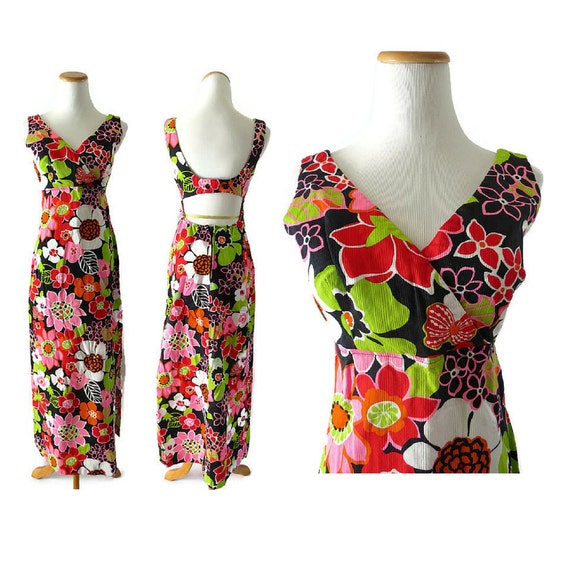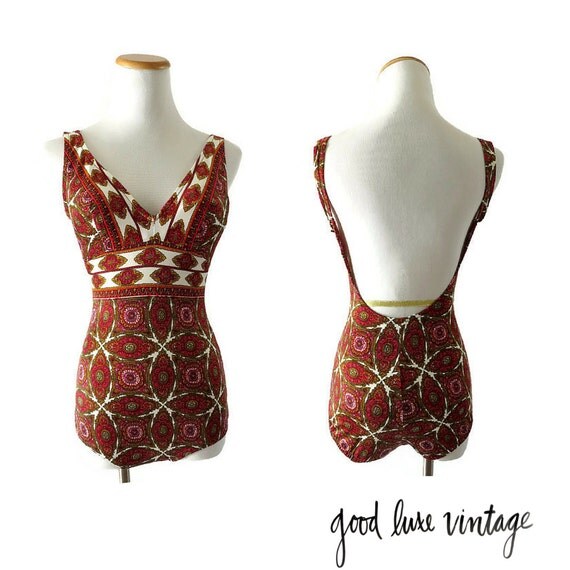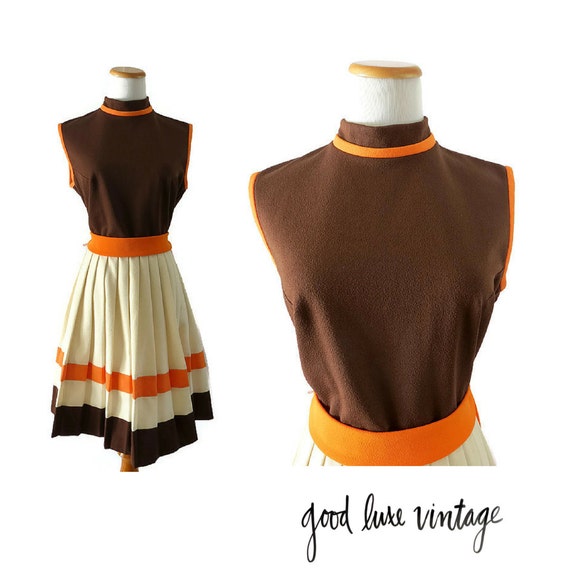Today I'm going to revealing some of my thrifting secrets - how to find vintage in thrift stores!
I've always loved vintage clothing and never thought I could find it in thrift stores. I would just buy the occasional piece at Buffalo Exchange or on eBay. I use to think thrift stores were disgusting and would never set foot in one. I'm so glad I got over that because they are the BEST places to find amazing clothing, shoes, accessories, house wares... pretty much anything you want or didn't even know existed, can be found at a thrift store.
Here are some of my tips for finding cool vintage clothes and accessories.
Where to thrift?
This is a hard one to say. It really depends on where you live and what's available to you. Generally I've had the best luck in smaller thrift stores in small towns. They often don't mark up their prices and their merchandise isn't picked over. My favorite thing to do is thrift when my husband and I are on road trips.Chain thrift stores are good too! Their prices will be higher though and they often have an idea if something is worth more (and then price it accordingly). I've always had good luck with Salvation Army stores. Goodwills are hit or miss - they usually don't have as much super old stuff and they do sell online (shopgoodwill.com) so they are aware of valuable pieces and those often get pulled and sold online for more. Savers is another chain that is massive but in my opinion, very, VERY overpriced. I prefer small independent places like church run thrift stores, charity shops benefitting animal issues, people with disabilities, etc etc.
Try searching on Google Maps rather than using Yelp. You'll find more!
Check your local paper and Craigslist for rummage sales and community garage sales, especially at senior centers and churches. Garage sales are so so for me - they rarely have vintage clothing.
There are also estate sales but that's another whole topic I'll get into in a future blog post.
Before you begin thrifting, I suggest prepping a little thrift survival kit that has a few things like:
1. a drink
2. a snack, like a granola bar or something with protein to keep you going!
3. hand wipes, because your hands are going to get dirty
4. a fully charged phone with GPS
5. comfortable shoes, because you're going to be standing for awhile
1. Start with dresses.
This is the area that I make a beeline to when I first enter a thrift store. Why? Because vintage dresses are usually the easiest to find and also the most sought-after vintage pieces for my Etsy shop and me personally. Dresses were more commonly worn in the past so it makes sense there are more vintage dresses available than say, tops and pants.Thrift stores will often sort their clothing into sizes but I ignore that. Often vintage sizes are not the same as modern sizes so a vintage 14 is actually a modern 8. I check the entire dress rack, from XS to plus size. Since I try to carry a wide variety of sizes for my customers, I always go through everything.
Use caution though in this area because lately there has been an increase in "retro" and "vintage style" dresses, especially from places like Target, H&M, and Forever 21. The dress may have a vintage-like print or cut, but it's not actually vintage. Always check the tags inside to be sure.
2. Scan the tops of the racks for interesting fabric, prints, and cuts.
Since I spend a lot of time searching, this is usually my favorite way to quickly scan for interesting pieces without having to go through every. single. piece. You'll want to look for retro prints and patterns, special looking collars, and cuts like cap sleeves. You can actually tell a lot about a garment just by looking at the top part of it! I am guilty of skipping the solid black items usually because they don't stand out, but there may be something cool hiding in there, you never know.3. Check the labels.
This is the fun part. You pull out a cool looking dress and then you check the label inside. You can usually tell if it's vintage right away. Here's what I look for:* made in USA (starting around the mid 1980s, clothing began to be made outside of USA much more commonly)
* an International Ladies Garment Workers Union union label (ILGWU for short)
* a vintage-y logo
Often vintage clothing won't have a label at all. This is because it's either handmade (which was quite popular to do back then! My mom made most of her awesome clothes in the 60s and 70s) or the previous owner cut out the tag. If there are no tags, you'll want to analyze the fabric, cut, and zippers/buttons for clues if the piece is really vintage.
4. Check the zippers and buttons.
Metal zippers were commonly used in dresses prior to the mid 60s. After that, the nylon zipper became popular. If you find something with a metal zipper (minus jeans of course), it's probably vintage! Dresses prior to the mid 60s often had side zippers. Later on, zippers in the back were more common. Funky buttons are another thing to look for.5. Look for damage.
Before you decide to buy something, look it over for damage. Check that the zipper works well, there aren't any weird odors, check the underarms for stains (extremely hard if not impossible to remove), look for any holes not on seams, and of course for any stains. Stains in polyester are generally pretty easy to remove. Cotton, not as much.
Also:
Don't switch or remove tags. It's bad thrift karma and the store may not sell the items to you without tags! Switching tags can be considered shoplifting so just don't do it.
A few more pointers of what I look for...
Dresses - of course anything 60s and earlier is a great find. 80s secretary dresses, if not too funky, are good too. 90s floral maxi dresses are really easy to find and popular right now.
Jeans - high waisted and wide leg are my favorites but really hard to find. Vintage Levis (with the big E on the tag) are extremely rare so if you ever find that, GET IT! Vintage Wranglers are cool these days and even "mom" style jeans. If you find a cool pair but don't like the cut of the legs, you can always cut them into shorts and fray or fold the ends.
Shorts - anything high waisted and in a funky print is good!
Tops - short sleeve and sleeveless tend to do better in my Etsy shop than long sleeves. Peter Pan collars, funky prints, lace, ascot bow ties - it's all stuff I look for. I try to not buy as much pastel plaid button ups because people don't seem to love them as much as me :( Sleeveless turtlenecks from the 60s are good finds too.
Shoes - vintage boots, sandals, wedges, heels... it's all good. I do avoid the 80s bridesmaid dyed heels and lots of 80s heels because they don't sell very well for me. Anything 70s is excellent (think Cherokee, Bass, YoYos, Connie, Famolare sandals & wedges). Woven huarache sandals are good too (just make sure they aren't modern). Justin Roper boots are great sellers if you can find them. Of course vintage Doc Martens (if made in UK, not China) do well too.
Men's - vintage t-shirts are super fun to go through. I also take a look at the cardigans and sweaters too. I don't sell much men's vintage so this isn't really an area I spend a lot of time looking through.
Purses - anything authentic like Dooney & Bourke (don't get replicas - you can't legally sell them online!), tapestry, funky leather, even fanny packs!
Belts - right now I'm obsessed with those Indian seed bead belts and Guatemalan woven belts.
Last thoughts... always check everything before you buy it. Remove the hangers before getting to the register.. it's good karma. Be extra nice to the thrift store cashiers. It will help you if something doesn't have a price and they price it right then and there. Look for coupons and sales online. I never haggle at thrift stores but you could try if it's a small one... you never know. Major chains won't haggle with you, their prices are firm.
Any other tips you want to share? Leave a comment!

















































